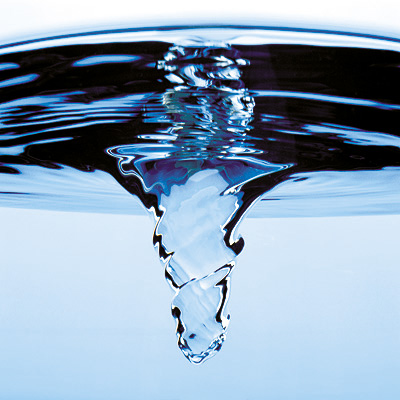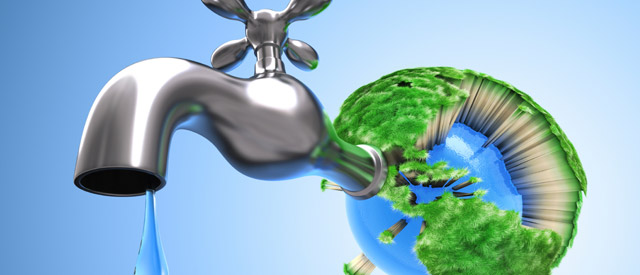 NASA balances water budget with new estimates of liquid assets
NASA balances water budget with new estimates of liquid assets
Scientists combined data from 10 sources that made use of observations from more than 25 satellites to describe different aspects of the water cycle: precipitation and evaporation over land and oceans, atmospheric water vapor and its movement, river runoff, and water storage including groundwater, soil moisture and snowpack.
The goal was then to balance the amount of water that went into each "compartment" of the water cycle, such as the ocean, a continent or a lake, with what came out. Earth is a closed system, which means that any water that evaporates from the surface must be accounted for in the atmospheric water vapor, which must then be accounted for when it condenses into rain or snow, and so on. Each of these stages was described by a different dataset.
Making all the datasets work together was challenging, said Rodell.
"Things don't always add up because the measurements aren't perfect," he said. "It's like if you're training for a marathon, and you find a route that Google Maps says is 26.2 miles. Then you run it and your iPhone app says you went 27.0 miles, and then you drive it and your car says you went 26.5 miles. Which one is right? You might guess the accuracy of each measurement and come up with an estimate somewhere in the middle."
To resolve the differences between datasets, Rodell, L'Ecuyer, and their team came up with a new mathematical technique to get the best estimate. They based it on how accurate experts believe each measurement to be, a number described as the scientific uncertainty or range of possible answers that are still reasonably correct.
It's as if the water cycle were a jigsaw puzzle, and each dataset for precipitation, water vapor, and so on were individual pieces that have to fit with all the other pieces. However, unlike your traditional jigsaw puzzle, here each piece has a certain amount of wiggle room – its range of possible answers.
As it turned out, the water cycle pieces did fit together within the wiggle room, allowing the team to see the big picture.
"That's very encouraging," said L'Ecuyer. "The data sets that we're generating – even though they are independently generated – they're all coming up with realistic uncertainty bars that allow us to derive these benchmark estimates."
The water cycle estimates were calculated in tandem with estimates made for the energy budget, an approach, that while not new, was "very well executed," said Peter van Oevelen, director, International of the Global Energy and Water Exchanges project of the World Climate Research Programme in Washington, who was not involved in the research.
"The estimates of the various water balance components cannot be done without looking at the energetic components," he said, adding that work still remained to improve the estimates for certain parts of the water and energy cycles, such as evapotranspiration, the estimates of how much water evaporates from soils and plants.
Rodell agreed, and is looking forward to incorporating data sets from satellites launched since 2010, such as the Soil Moisture Active Passive mission, launched in 2014, that may help refine those estimates.
These water cycle and energy budget datasets are made possible by NASA's fleet of Earth-observing satellites, which see all parts of the planet, including the oceans, remote areas and developing countries where it's difficult or impossible for scientists to obtain "on the ground" measurements, said Rodell. The next generation of satellites launched since 2010 will eventually allow estimates of water movement to be produced for the current decade with even higher accuracy, he said.
--
Explore further: Much irrigation water comes from non-sustainable sources
More information: "The Observed State of the Water Cycle in the Early 21st Century." Journal of Climate 2015 ; e-View doi: dx.doi.org/10.1175/JCLI-D-14-00555.1
"The Observed State of the Energy Budget in the Early 21st Century." Journal of Climate 2015 ; e-View doi: dx.doi.org/10.1175/JCLI-D-14-00556.1
| Contact information |
"The Observed State of the Water Cycle in the Early 21st Century." Journal of Climate 2015 ; e-View doi: dx.doi.org/10.1175/JCLI-D-14-00555.1 Read more at: http://phys.org/news/2015-07-nasa-liquid-assets.html#jCp
|
|---|---|
| News type | Inbrief |
| File link |
http://phys.org/news/2015-07-nasa-liquid-assets.html |
| Source of information | phys.org |
| Keyword(s) | water budget, water balance, water cycle |
| Subject(s) | HYDRAULICS - HYDROLOGY , INFORMATION - COMPUTER SCIENCES , INFRASTRUCTURES , MEASUREMENTS AND INSTRUMENTATION , METHTODOLOGY - STATISTICS - DECISION AID , POLICY-WATER POLICY AND WATER MANAGEMENT , WATER DEMAND |
| Relation | http://phys.org/journals/journal-of-climate/ |
| Geographical coverage | n/a |
| News date | 12/08/2015 |
| Working language(s) | ENGLISH |
 you are not logged in
you are not logged in





